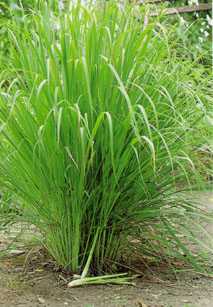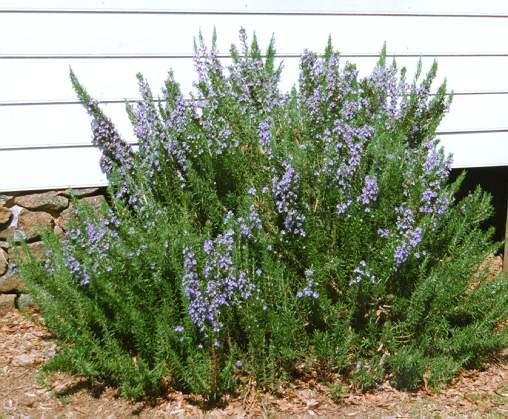This Spring and Summer protect your home and your Family and your pets from them without using nasty Toxic Chemcials
1..Diatomaceous earth
Diatomaceous earth is a remarkable, all-natural product made from tiny fossilized skeletal remains of unicellular plants called diatoms. But while 'DE' may look and feel like talcum powder to us, to insects it is a lethal dust with microscopic razor-sharp edges which cuts thier protective outer covering, leading to desiccation and death. And while DE spells death to insects, it is harmless to humans and pets.
source Wikipedia
Sprinkle a light layer of the powder over any indoor areas that you suspect of having pests such as fleas and ticks. It is very effective on upholstered furniture, carpets and pet beds or areas where your pets spend time. Use a broom to sweep it into any cracks where insects may be hiding. Be sure to get it into all parts of the furniture, including the edges and under the cushions. make sure you have food grade Diatomaceous Earth.
Dust outside areas that hide pests, especially spots where your pet likes to rest, since such places can be havens for fleas. Don’t apply diatomaceous earth when the ground or grass is damp, since it will turn to paste and be rendered ineffective. You’ll also need to reapply it after watering or rainfall.
Apply diatomaceous earth to any other areas in your home that may be hiding pests, including crawl spaces, under porches, in the space between walls and in the attic. The more places you can put it, the more pests it can kill. In addition to fleas and ticks, diatomaceous earth is effective against termites and other such pests, but only if you put it where they live.
Vacuum the house a few days after you apply the diatomaceous earth. It isn’t necessary to remove it from places you don’t go, such as in the attic or crawl spaces, but do vacuum your furniture, rugs and other living areas to get rid of the powder and pick up all of the dead and dying pests, along with flea eggs. Outdoors, you can just leave the diatomaceous earth in place.
Kills spiders, Fleas, Ticks, Mites, Ants , Roaches , Bed Bugs, Silverfish and much more
you can find diatomaceous earth at home depot, Lowes , Hardware stores and online retailers
make sure it says FOOD GRADE DIATOMACEOUS EARTH check your label
2.Fleas and Ticks Herbal bath
8 oz apple cider vinegar
4 oz warm water
1/2 tsp salt
1/2 tsp baking soda
Mix dry ingredients first then slowly add to wet as the vinegar and baking soda will react slightly. Be careful not to get in pets eyes.
Grow herbs
3.Rue

Rue (Ruta graveolens) is an evergreen herb with metallic blue, feathery foliage. The herb has disinfectant and insecticidal properties for getting rid of flies, mosquitoes and a number of other insects naturally. Rubbing the herbs over pets keeps away the fleas. Planting rue with other plants keeps beetles and slugs from the garden. The semi-woody plant grows to a full height of about 2 1/2 feet. Rue foliage has a medicinal and bitter smell upon crushing or cutting. The herb blooms with small, four petaled flowers during summer. Rue is easy to grow from seed and thrives in a range of soil types including poor soil. You also can grow the herb as an indoor plant.
4.Wormwood

Wormwood (Artemesia absinthium) is among the bitter herbs used for centuries to repel and deter insects including ticks,fleas, flies and moths. Wormwood grows to a mature height of about 3 feet and has gray-green foliage. The plant is covered with fine hair and blooms with yellow flowers during summer. Wormwood is widely used in traditional medicine both by itself or in combination with other herbs to relieve digestive and gallbladder disorders. Wormwood, also referred to as artemesia, grows naturally in the temperate and mild climates. The foliage of wormwood is used for making an herbal tea.
5.Mint

Mint (Mentha) is among the most recognized and most used herbs in the kitchen, which also keep away a wide range of insects with its strong scent. Mint is especially effective for deterring beetles and fleas. Keeping sachets of dried mint in closets keeps out moths and placing fresh mint in pantries helps deter ants. Rubbing the herbs over the neck, face and hands repels mosquitoes, and rubbing the herb over pets and mouths of horses and cows keeps them free from flies. Planting mint with cabbage and tomatoes gets rid of aphids, cabbage white butterflies and white flies.
6.Lemongrass (Cybopogon citratus)

Lemon Grass oil comes from the tropical lemongrass plant Cymbopogon citrates. A related species, citronella grass, repels ticks, fleas,spiders,bedbugs and Mosquitos. Lemongrass oil contains a pleasing citrus scent and is also useful in controlling oily scalps and skin conditions, making it suitable for lotion, spray, soap and shampoo formulas. Both species of Plants are excellent choices for the Garden and non toxic to Animals or humans
7. Rosemary (Rosmarinus officinalis)
Oil of Rosemary

You can purchase oil of rosemary from health food stores and those specializing in aromatherapy. There is no standard for rosemary oil, so the concentration can vary every time you purchase it. If you would like to create oil of rosemary on your own, chop a bunch of fresh rosemary leaves. Pour a cup on nearly boiling water over the leaves, then let the mixture sit for several hours. Strain the liquid into a container for a dilute mixture of rosemary oil and water.
Pets
Oil of rosemary works as a tick repellent for pets. Undiluted oil can cause contact dermatitis, so do not apply it directly to a pet's skin. Spray your pet's bedding with the dilute mixture of oil and water to protect it where it sleeps. Create an herbal tick repellent collar by purchasing a fabric collar. Place a few drops of rosemary oil on the collar every week or so. The scent will repel ticks and refreshing it will keep it working well.Once dry, grind the leaves to a powder in the blender. Rub the powder into your pets’ fur and sprinkle it in your yard concentrating on the soil and plants of your animals’ outdoor spaces.
Home
Oil of rosemary can help keep ticks away from your home. When cleaning, add a few drops of the oil to the water use for mopping to deter ticks from crossing your floors. Create the dilute mixture of rosemary oil and water, then spray it in doorways and across windowsills to stop ticks from entering your home. Spray the mixture on your patio or outdoor furniture. You can place a few drops of undiluted oil on cloth-covered outside furniture to keep ticks away when you are outside.
Considerations
Oil of rosemary does not just repel ticks; it also deters flies, aphids and mites. While oil of rosemary is a tick repellent, it is not the most effective one available. Rose geranium and palmarosa essential oils repel ticks better. You can combine them with oil of rosemary to provide better protection for your pets and your home.
8.lemon eucalyptus oil

Corymbia citriodora is a tall tree, growing to 35 metres in height (but sometimes taller), from temperate and tropical north eastern Australia. It is also known as lemon-scented gum, blue spotted gum, lemon eucalyptus and eucalyptus citriodora.
Oil of Lemon Eucalyptus is sold in stores under the brand name Cutter and Repel Lemon Eucalyptus. Oil of Lemon Eucalyptus (OLE) is recommended by the EPA and Center for Disease Control as the only plant based ingredient for use as a repellent. Many studies have been conducted and OLE is proven to be as effective as DEET in repelling ticks and mosquitoes.
9. Lavender

A sweet-smelling, all-purpose insect repellent, lavender essential oil performed well in recent studies as both a tick deterrent and a method of preventing tick eggs from hatching.
Use lavender in soaps, lotions, spray repellents, potpourris and under cushions and rugs.
10. Mexican Marigolds (Asteraceae)

Mexican marigolds have natural tick-repellent qualities. Originating in Central America, the Mexican marigold with its bright yellow and orange flowers and pungent leaves can deter many pests, including deer, when planted at the outer edges of your garden. Burn marigold leaves as a tick repellent or obtain essential oils by steam distillation. Use the marigold plant externally to remove ticks from your skin.
soaps, candles made with marigold are excellent to Repell Fleas
Also repels Spiders, Fleas, Ants and Mosquitos
More Tick-Repellent Plants
Lemon scented herbs are said to help deter ticks and other pests, such as lemon thyme, lemon balm, lemon verbena, lemon grass, lemon eucalyptus, lemon pelargonium.
Sage repels cabbage moths, carrot flies, and ticks, and carrots will benefit from sage.
Rose geranium plants will deter ticks from entering your yard; when you are outdoors, you can crush the leaves of rose geraniums and mint plants and rub them on your skin to make an all-natural flea and tick repellent.
A few more plants that have shown tick-repellent activity through their essential oils are allspice, basil, cedar, cinnamon, lavender, peppermint, pine and soybean; usually these deterrents give a limited protection time that does not exceed two hours.
Anti-Tick Lawn Care
Cut your lawn close to destroy a large number of ticks. If the number of ticks is on the rise in your region, set your lawnmower’s blade to its lowest setting. Ticks need grass at least three inches tall to grow and thrive. Close cutting will give your yard a severe trim and is a surefire method of destroying a large amount of ticks in your landscape. You can also apply Diatomaceous Earth to your yard (not the kind you use in a swimming pool, but the kind you get at a feed store or organic nursery) which will also help with getting rid of lots of other bugs.
.jpg)

Very informative. Thanks tons.
ReplyDeleteThis comment has been removed by a blog administrator.
ReplyDelete